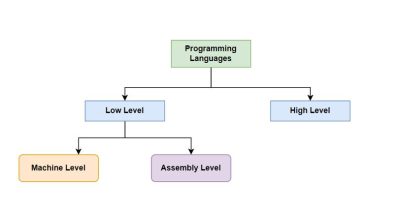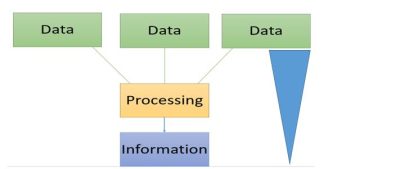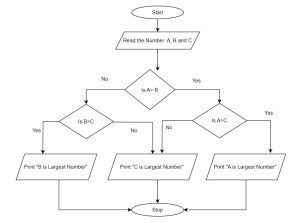Microsoft Word is used to create professional-quality documents, letters, reports, etc., MS Word is a word processor developed by Microsoft. It has advanced features that allow you to grammar check, spell check, image and graphics support, text and font formatting, advanced page layout, HTML support, and more.
Follow below steps to open MS Word on your computer:
Start → All Programs → MS Office → MS Word.
Create Microsoft Word document:
- Open Microsoft Word with the above steps.
- Click on the Microsoft button (or File) and click the new option and this will open a new document.
(Go to File>New)
- Save.
Features and Components of MS Word

- Home
This has options like font color, font size, font style, alignment, bullets, line spacing, etc. All the basic elements which one may need to edit their document is available under the Home option.
- Insert
Tables, shapes, images, charts, graphs, header, footer, page number, etc. can all be entered in the document. They are included in the “Insert” category.
- Design
The template or the design in which you want your document to be created can be selected under the Design tab. Choosing an appropriate tab will enhance the appearance of your document.
- Page Layout
Under the Page Layout tab comes options like margins, orientation, columns, lines, indentation, spacing, etc.
- References
This tab is the most useful for those who are creating a thesis or writing books or lengthy documents. Options like citation, footnote, table of contents, caption, bibliography, etc. can be found under this tab.
- Review
Spell check, grammar, Thesaurus, word count, language, translation, comments, etc. can all be tracked under the review tab. This acts as an advantage for those who get their documents reviewed on MS Word.
Apart from all the above-mentioned features, the page can be set in different views and layouts, which can be added and optimized using the View tab on the Word document. Margins and scales are also available for the benefit of the users.
Application of Word Processing Software (MS Word)
Business Documentation:
Reports: Creating and formatting business reports, including financial reports, performance reports, and project status reports.
Proposals: Drafting and editing proposals for new projects, products, or services.
Correspondence: Writing and formatting business letters, memos, and other communication.
Academic and Educational Use:
- Research Papers: Writing and editing academic papers, research papers, and essays.
- Lesson Plans: Creating lesson plans, educational materials, and handouts for teachers.
- Student Assignments: Students use word processors for completing and formatting assignments.
Personal and Creative Writing:
- Creative Works: Writing and editing creative works such as novels, short stories, and poetry.
- Personal Documents: Maintaining personal documents, letters, and diaries.
- Resumes and Cover Letters: Creating and formatting professional resumes and cover letters.
Marketing:
- Marketing Materials: Designing and formatting promotional materials like brochures, flyers, and newsletters.
Web Content Creation: Drafting content for websites, blogs, and online platforms.
Microsoft Word Practical
Spelling and Grammar Check
- Open Office program, click the Review tab on the ribbon.
- Click Spelling or Spelling & Grammar.
- If the program finds spelling mistakes, a dialog box appears with the first misspelled word found by the spelling checker.
- After you decide how to resolve the misspelling (ignoring it, adding it to the program’s dictionary, or changing it), the program moves to the next misspelled word.
Thesaurus
A book of words or of information about a particular field or set of concepts; especially: a book of words and their synonyms
- Open the Office program, and click the Review tab on the ribbon.
- Click Thesaurus.
Header and Footer
- Choose Insert and select either Header or Footer.
- Select any built-in format for your header or footer. After you choose a format, the header and footer area are shown in your document.
- Type the text you want in the header or footer.
- When you’re done, choose Close Header and Footer.
Object Linking and Embedding
OLE is a Microsoft’s compound document technology developed by Microsoft that allows embedding and linking to documents and other objects.
Difference Between Object linking and Embedding
| Embedding | Linking |
| It is the process to insert the object | It is the process to insert the object but by establishing the relation between source place and used objects. |
| After inserting the object there is no relation between source object and working object | After inserting the object, we can double click over it to go its source place again. |
| When you make changes to the source object, it doesn’t affect used/working objects. | When you make changes to the object, updates the both files. |
Steps:
- Select object from one program (such as MS excel) and select home on the ribbon and click on copy
- Start another program(such as MS office)
- Select the Home on the Ribbon.
- Select the Paste Command.
- Select paste special, dialog box appears.
- Click on paste and choose the document format which you want to display(such as Microsoft excel worksheet object )
- Click ok.
Note: For linking click on paste link choose the document format which you want to display (such as Microsoft excel worksheet object)
Hyperlink
- Select the text or picture that you want to display as a hyperlink.
- right-click the text or picture and click Hyperlink on the shortcut menu (OR Press Ctrl+K)
- In the Insert Hyperlink box, type or paste your link in the Address box.
Macro
What is macro?
If we have to perform task repeatedly in Microsoft word, we can automate the task by using a macro.
A macro is a series of word commands and instruction that are grouped together as a single command and can be run to accomplish the task. Macros automate frequently used task to save time on keystrokes and mouse action.
What are the function of macro?
- To speed up routine editing and formatting
- To combine multiple commands
- To automate a complex series of task.
Steps:
- Click the view tab and then click Record macro. Record macro dialog box appears.
- In the record Micro dialog box,
- enter macro name and description
- from drop down list of store macro in: select an option
- you have two option select either button or mouse
- If you have click keyword button, customize keyword dialog box appears.
- Enter new shortcut key and click assign and then close
Password Protection and Remove
Protection
- 1. Go to File > Info > Protect Document > Encrypt with Password.
- 2. Type a password, then type it again to confirm it.
- 3. Save the file.
Remove
- Open the document and enter its password.
- Go to File > Info > Protect Document > Encrypt with Password.
- Clear the password in the Password box, and then click OK
- Save the changes.
Mail Merge
Mail merge is a useful tool that allows us to easily produce multiple letters, labels, envelopes, and more using information stored in a list, database, or spreadsheet. It is the process of combining a list of data with a template.
It usually requires two files, one storing the valuable data to be inserted and the other Word document containing the information that will be the same for each result of the mail merge and instructions for formatting the valuable data.
The function of mail merge is to create:
- A set of labels or envelops
- A set of form letters, email messages or faxes.
- A set of numbered coupons.
Steps:
- Open Microsoft Word
- Select the Mailings tab on the ribbon
- Select the Start Mail Merge command
- Select Step by Step Mail Merge Wizard
The Mail Merge task pane appears on the right of your screen (Note: There are 6 steps)
Step 1
Chose the type of document you wish to create
1) Click Letters.
2) Click Next: Starting document
Step 2
1) Click Use the current document
2) Click Next: Select recipients
Step 3
The recipients can come from either an existing Excel file or Access table, or you
Can create a new list.
- Select type a new list Button
- Click Create. The new address list dialog box appears.
- Click Customize Columns to modify the list of fields
- Delete any unnecessary field names and/or add new ones
- Click OK
- Enter the necessary data in the new address list dialog box.
- Click New Entry to enter another record.
- Click Delete Entry to Delete record
- Click OK
- Click Save
- Click Next: Write your letter
Step 4-6
- Write a letter in the current word document or use an open, existing document.
- Place the insertion point in the document where you wish the information to appear.
- Select Address Block and/ or More Items
- Select the field you would like to insert in the document.
- Click Insert.
- Click Next: preview your letters
(Preview the letters to make sure the information from the data record appears correctly in the letter)
- Next : Complete the Merge
- Click print to print the letters
- Click All
- Click OK
- Click OK in the merge to the printer dialog box.
- Click OK to send the letters to the printer



